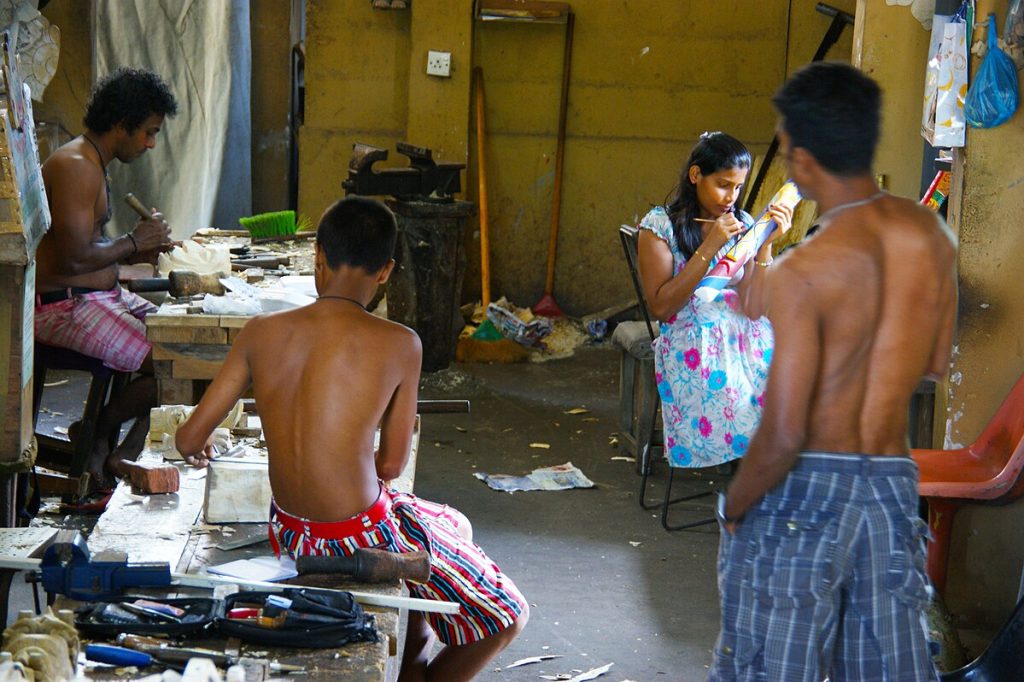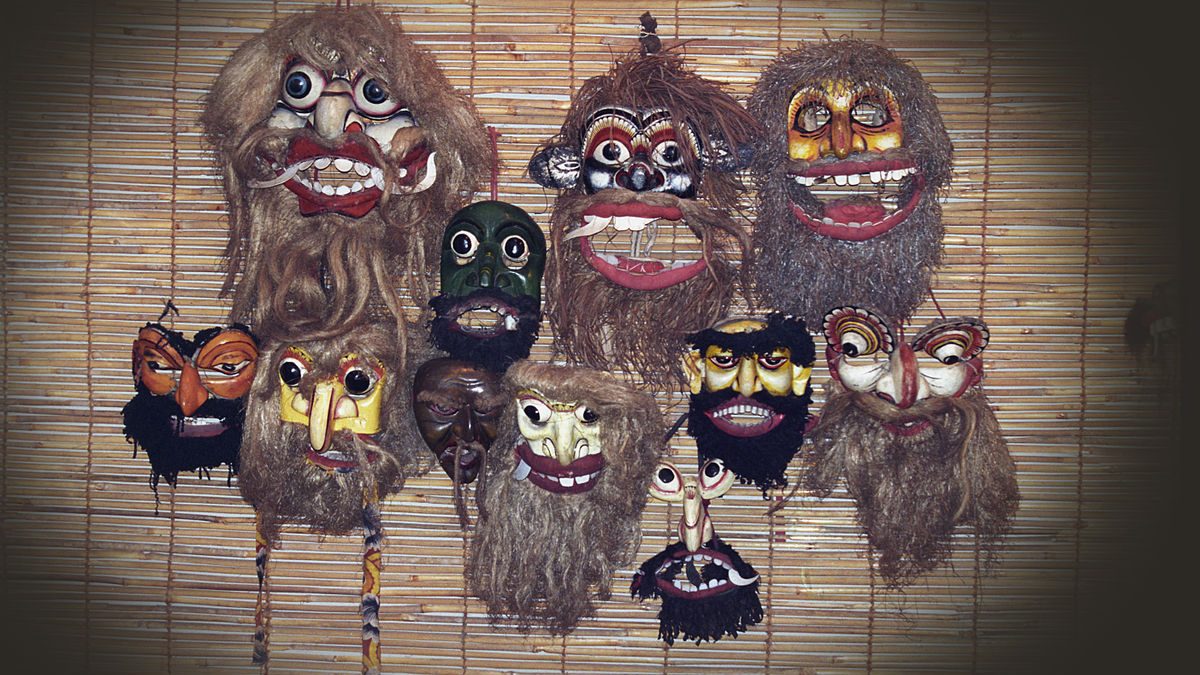Ambalangoda is a coastal town in the south-west of Sri Lanka, renowned for carrying on the remarkable mask-making tradition in the country. It features the Ariyapala Mask Museum, a centre dedicated to the history and art of mask making, with several local artisans using their skills to produce masks of various colours and shapes. Visitors with a fascination for this local craft will find the Museum a worthwhile place to explore.
The Tradition of Masks in Sri Lanka
Masks were a significant part of Sri Lankan ceremonies and rituals back when the worshipping of trees and animals was common practice. Today these masks are still produced as cultural symbols of long ago traditions.
There are several types of masks to be found, each associated with a specific purpose or ritual. The Raksha Mask was used to perform ‘Raksha dances’ and refers back to a legendary time when it is believed that the island was governed by Rakshas or ‘devils’. These Raksha’s were said to take on numerous forms which the masks now depict. The Sanni Mask was used when treating illnesses and performing medicinal therapies, while the Kolam Mask and its various types were used during dramas and other performances.
Sri Lankan masks stand out for their vibrant colours, odd shapes and grotesque, exaggerated facial features. They are now commonly featured as decorative elements in several local homes.
The Museum
The Ariyapala Mask Museum is a centre run by the Wijesuriya family, located on the Colombo-Galle main coastal road, a short drive from Heritance Ahungalla. It is named after Ariyapala Wijesuriya Gurunnanse, one of the most famous artisans in the country.
With the rapid decline of traditional beliefs and customs, Sri Lanka’s traditional mask culture has undergone a decline. The museum in Ambalangoda is dedicated to preserving this vibrant culture by producing and displaying various masks and puppets, each with its own unique history and meaning. Several masks and puppets are also available for purchase. As such, visiting the museum is one of the best things to do down south in Sri Lanka for anyone with an interest in Sri Lankan mask culture.
The Museum also features mask-making workshops and a library.
The Workshops and Events

The Museum features several workshops that demonstrate how these intricate masks are created. Visitors can witness how the masks are cut from the Kaduru tree and how they are skillfully crafted, shaped and painted using various traditional tools.
Other workshops focus on exploring the creative side of mask painting, wherein visitors can join the local artisans in adding colour and patterns to the carved masks. These workshops provide a unique opportunity for visitors to interact with mask makers and learn more about the intricate process of making these items.
The Museum also hosts various puppet shows, traditional dance shows and other performances that feature locally made masks and puppets.
The Library
The mask library that is a part of the Museum is the only one of its kind in the country. It presents anthropological records that document the history of mask-making in Sri Lanka, and the various performances that featured these masks. The library contains a wealth of information for researchers, students and anyone else interested in reading about this unique tradition.
Related posts
HOT TOPICS
Archives
Categories
- Activities (939)
- Adventures (166)
- Dining (96)
- Events & Festivals (98)
- Kids Pools (49)
- Playgrounds (47)
- Restaurants (60)
- Theme Parks (48)
- Destinations (2,164)
- Family Travel Tips (823)

